Unleash Gehry: Give Frank the East River and Churn the Lower Manhattan Pot
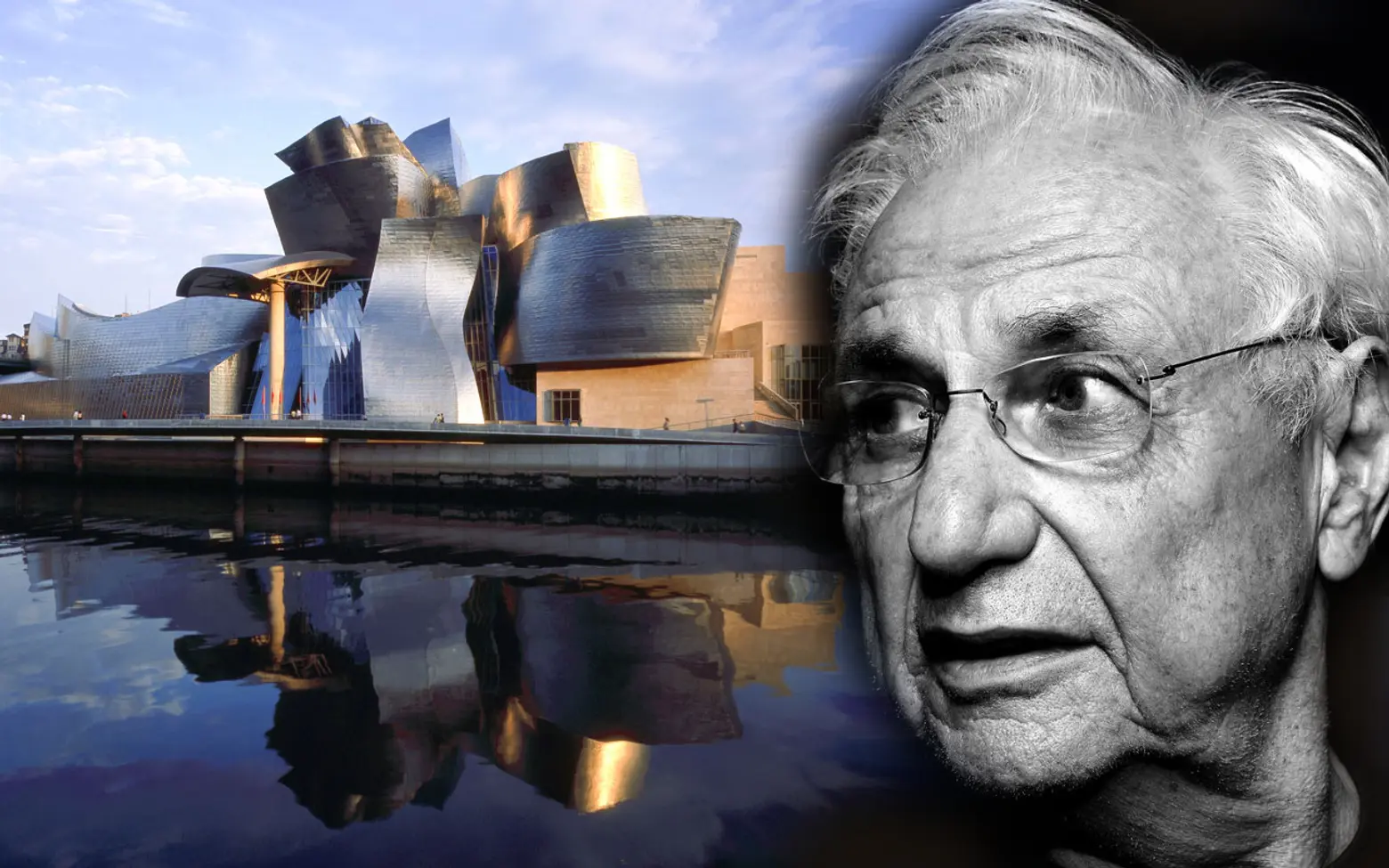
Image: Frank Gehry against his design for the Guggenheim in Bilbao, Spain
The Foundation Louis Vuitton in the Bois de Bologne in Paris recently opened and was another kudo for architect Frank O. Gehry whose Bilbao, Spain, branch of the Solomon R. Guggenheim Museum in 1999 was widely regarded as the most important architecture project since the opening of the Pompidou Center in Paris in 1975. All these projects are Deconstructivist; they don’t fit easily into boxes and are not symmetrical. Their aesthetic tends to be chaotic, disorganized, aggressive, random and definitely unconventional, but also absolutely heroic, proud and defiant.
The Pompidou Center was huge and intimidating, a gargantuan power plant for some unfinished but gaily painted super ocean liner. By comparison, the Guggenheim was a shiny swirl of silvery metal cascading by its riverfront location in a staccato flurry of flamenco stomps. Vuitton is a whole other gesture altogether; an organic amorphous form about to devour a city, formed of glass, wood and concrete in rearing and overlapping fashion, a mad dash about enclosure.
All of these might just amount to a sophisticated bowl of cherries for architecture aficionados, except that this project was a baby of Bernard Arnault, the head of the luxury conglomerate that runs not only Louis Vuitton, the purser, but also bubbler Moët & Chandon, sipper Hennessy, dazzler Bulgari and fashionistas Dior, Fendi and Givenchy—all One-Percent darlings. These, of course, are not the only platinum brands but they’ll certainly do in an all-so-sizzling and svelte pinch.
You may now ask what has all this to do with our city.
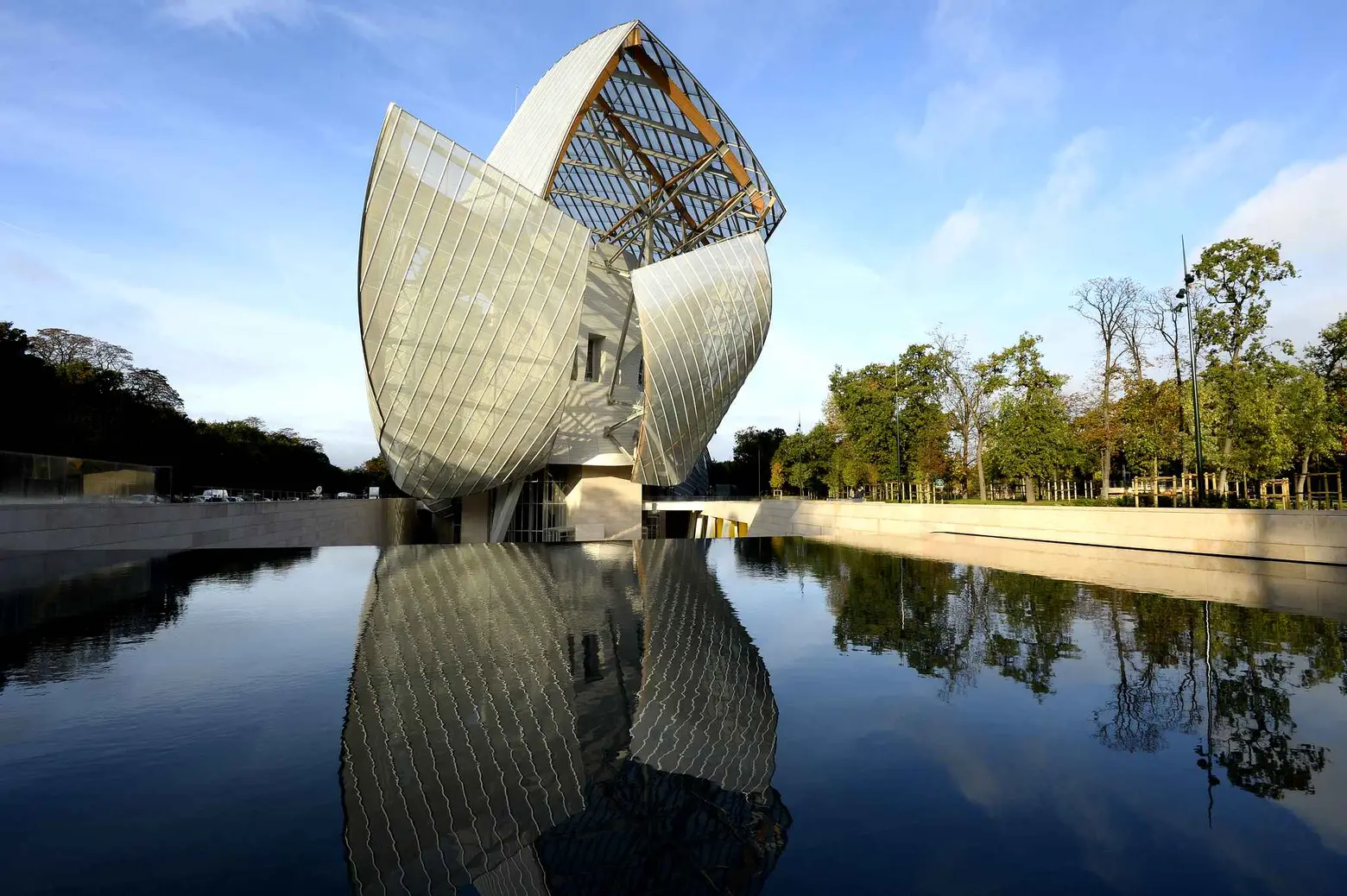 The Foundation Louis Vuitton in the Bois de Bologne. Image via 20minutes.fr © Bertrand Guay/Agence. The photograph, featured in papers across the globe, gave the impression it was a praying mantis on its hind legs, a vertiginous mountain about to capsize.
The Foundation Louis Vuitton in the Bois de Bologne. Image via 20minutes.fr © Bertrand Guay/Agence. The photograph, featured in papers across the globe, gave the impression it was a praying mantis on its hind legs, a vertiginous mountain about to capsize.
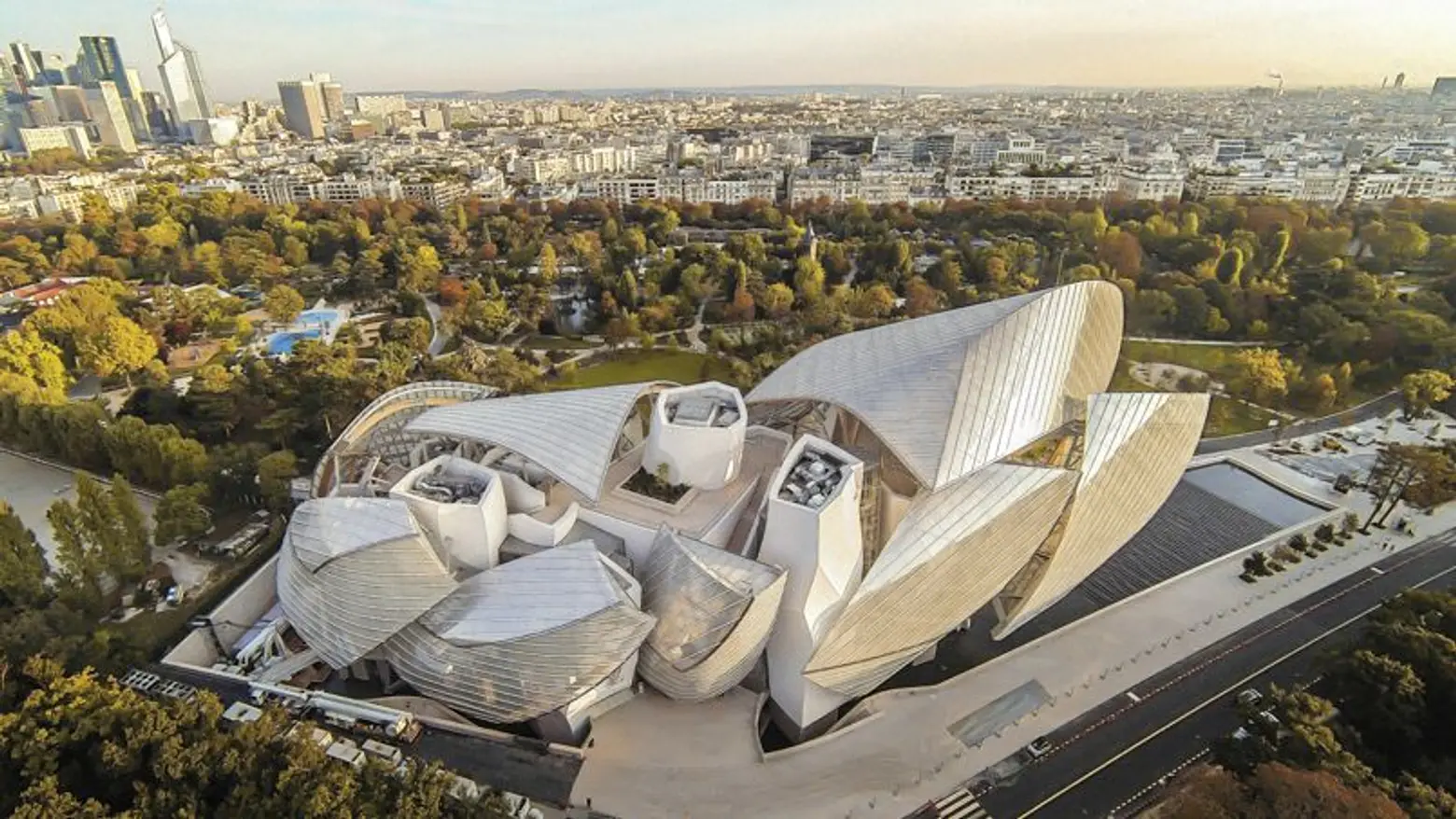 A later aerial photograph in January 7, 2015 edition of The Wall Street Journal (similar to the above) showed it in better light as a glistening whale shark about to breach and show real whales a balletic thing or two, a grand Gehry jeté/jeste. Image via Espace Arts Magazine
A later aerial photograph in January 7, 2015 edition of The Wall Street Journal (similar to the above) showed it in better light as a glistening whale shark about to breach and show real whales a balletic thing or two, a grand Gehry jeté/jeste. Image via Espace Arts Magazine
Not long after Bilbao astounded the world with its metallic wraps and romantic non-sequiturs, the Solomon R. Guggenheim Museum knew it had a good thing by the throat and planned a much grander version for the East River in Lower Manhattan sculpted by Gehry. Several blocks long and about 40 stories high, and located just to the south of the South Street Seaport, it was conceived in a pre-9/11 world and would have done much to rectify the imbalance fostered in Lower Manhattan by the World Trade Center complex.
It presented itself as a very potent tonic to greatly reinvigorate the city.
 Carter B. Horsley for The City Review
Carter B. Horsley for The City Review
9/11, of course, changed a lot of things and the resulting depression killed the Guggenheim project.
Well, times have changed and the city is booming, but without a rudder. The city appears to be throwing in the planning towel and letting developers run riot, charmed by the magic and allure of new skylines. The Guggenheim has lost Thomas Krens, its visionary leader, but still is spawning new ventures internationally.
It is time for it to turn its attention back home and recommission Gehry to slightly revise and enlarge his grandiose vision.
What he did with the Vuitton project in Paris was to create an ungraspable, unbounded immensity. Two dimensions are not enough to comprehend its complexity. This, of course, has always been true of good architecture but usually the observer can extrapolate from the given and obvious frontal impressions. At Bilbao, and also at Disney Hall, Gehry’s later, wonderful metallic cultural palace in downtown Los Angeles, Gehry’s sprawling tentacles were embracing and not threatening.
At Vuitton, however, Gehry’s jutting forms conjured tsunamis and their glassy facades explosively shattered reflections while exposed glimpses of wood beams jolted the mind now conditioned to high-tech and not log cabins.
In reality, it is not all that large, but isolated in the Bois de Bologne its scale and shape are deceptive.
The writer of The Wall Street Journal article, Joel Henning, noted that Artnet News described the structure as “T’he Sydney Opera House crossed with a blimp,” and indeed the concatenating ‘”sails” of Jørn Utzon’s famous 1973 opera house are Vuitton’s orderly, non-Deconstructivist ancestors.
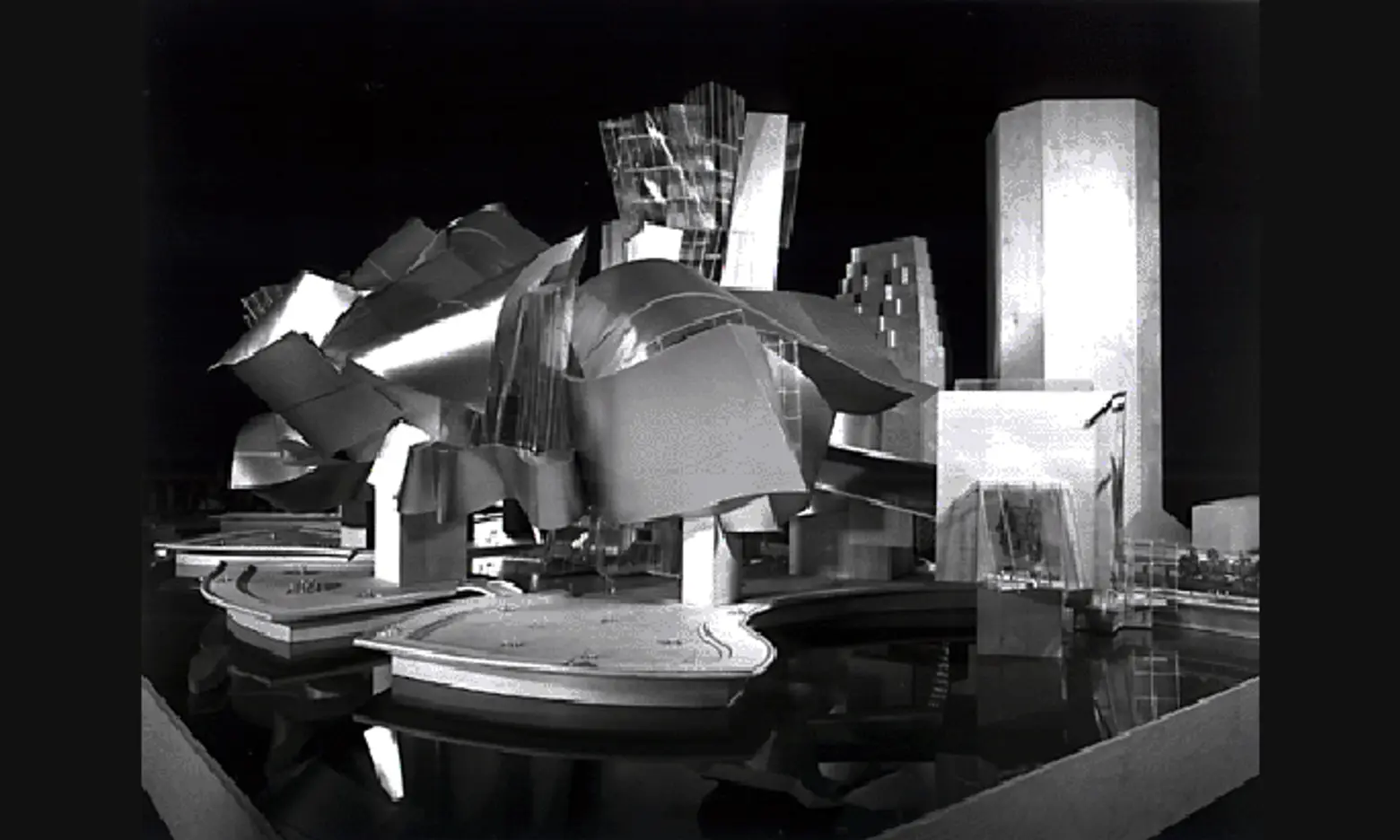
Gehry’s plan for the downtown Guggenheim was a very flamboyant project of great magnitude as it would soar some 40 stories and stretch for several blocks along the riverfront with very broad, curved, open plazas and esplanades beneath its furling canopy of silver-colored, asymmetrical museum spaces topped with condominium apartments.
A lot has happened downtown in recent years. The World Trade Center site has begun to take shape with the memorial plaza and two of four major towers up and Santiago Calatrava’s “bird” transportation terminal has had its wings clipped so it cannot flutter open to the sky as originally planned and is still wildly over budget.
Gehry’s fine design for a cultural center at the World Trade Center site was sadly aborted with no replacement yet in sight. The West Side Highway has not been tunneled, crippling a major integration of the great Battery Park City with the “mainland.”
Calatrava’s proposed stack of ten four-story houses at 80 South Street never got off the ground, but Gehry’s gleaming stainless steel rental tower at 8 Spruce Street near City Hall did, and more recently the delightful fireboat pier at Battery Park has been renovated finally and made a restaurant.
All is not gloom, of course, as Downtown has rebounded with a tremendous amount of residential conversions of major office towers significantly altering its character.
There is one very big sore point: South Street Seaport.
The seaport, a grand scheme by the Rouse company to create a “festival” marketplace to refresh the historical roots of Lower Manhattan as a major shipping port has been substantially altered by the Howard Hughes Corporation that demolished its large retail and entertainment pier south of the Brooklyn Bridge. Howard Hughes wants to replace the pier with a lower, glass structure that looks like a surburban mall at the base of a new 40-something-story tower on the former site of the Fulton Fish Market.
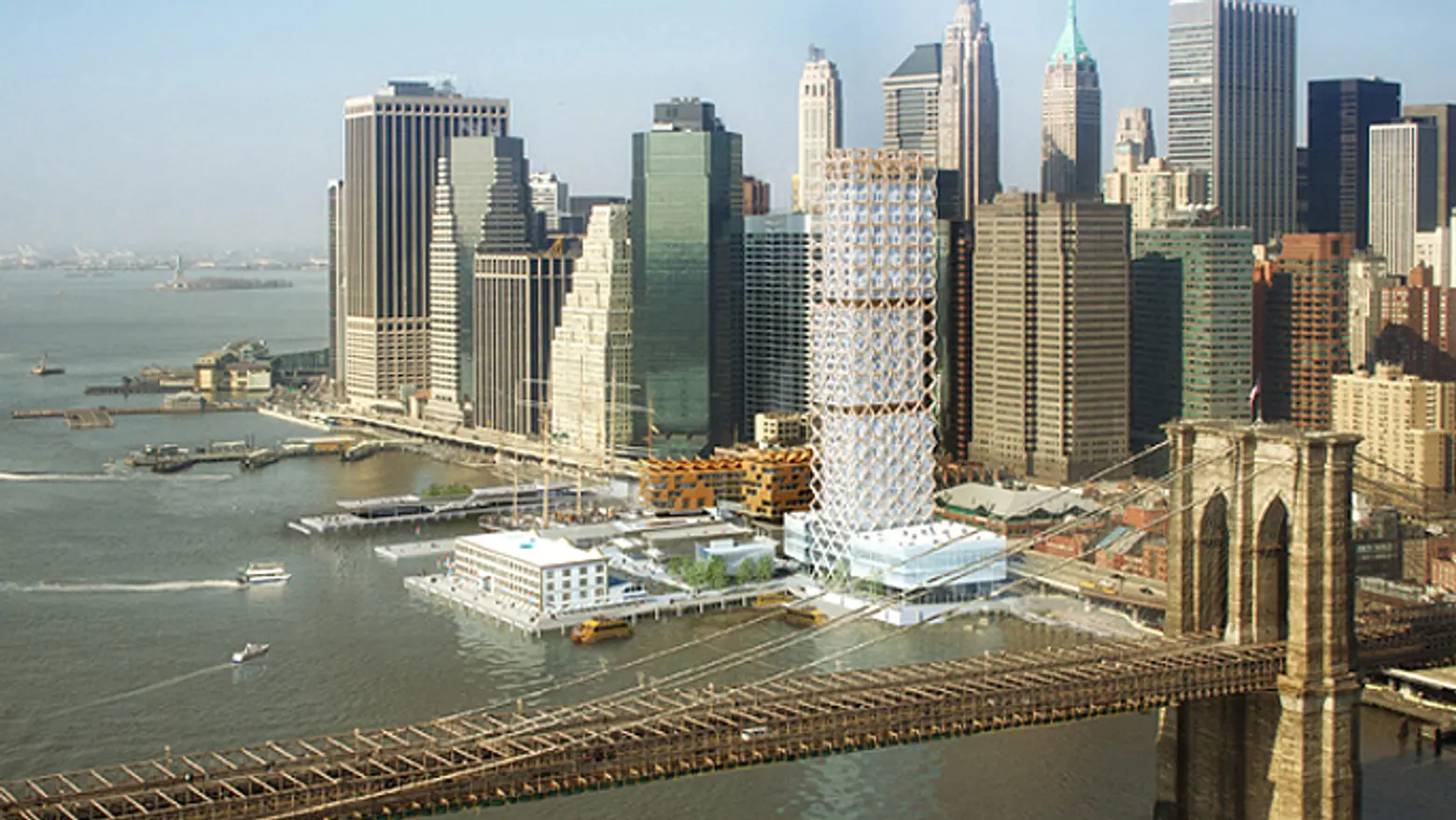 Image © SHoP Architects
Image © SHoP Architects
It hired SHoP Architects to design the tower and its design was a fishnet exoskeleton that was not quite as eye-catching as the myriad masts of tall shipping vessels that used to line the shoreline, but it was interesting and vaguely complimented the lacy threads of the Brooklyn Bridge’s cables.
Residential neighbors, however, raised their voices to protest the height of the proposed tower and managed to get it lowered about ten stories and redesigned.
The new design, however, is ghastly as parts of the façade look eroded and diseased, even though SHoP has become one of the city’s most active architectural firms, even given the task of redoing park of the FDR Drive.
There was a time when the Seaport was considered a major tourist attraction for Lower Manhattan and the notion of the city’s nautical roots was a bustling and exciting reality. Many New Yorkers once made regular trips to navigate its briny offerings as a real alternative to Chinatown.
Some planners even promoted the notion of a triangulated Lower Manhattan between the Seaport and the World Financial Center with its great Wintergarden and large yacht basin and Battery Park City.
So….
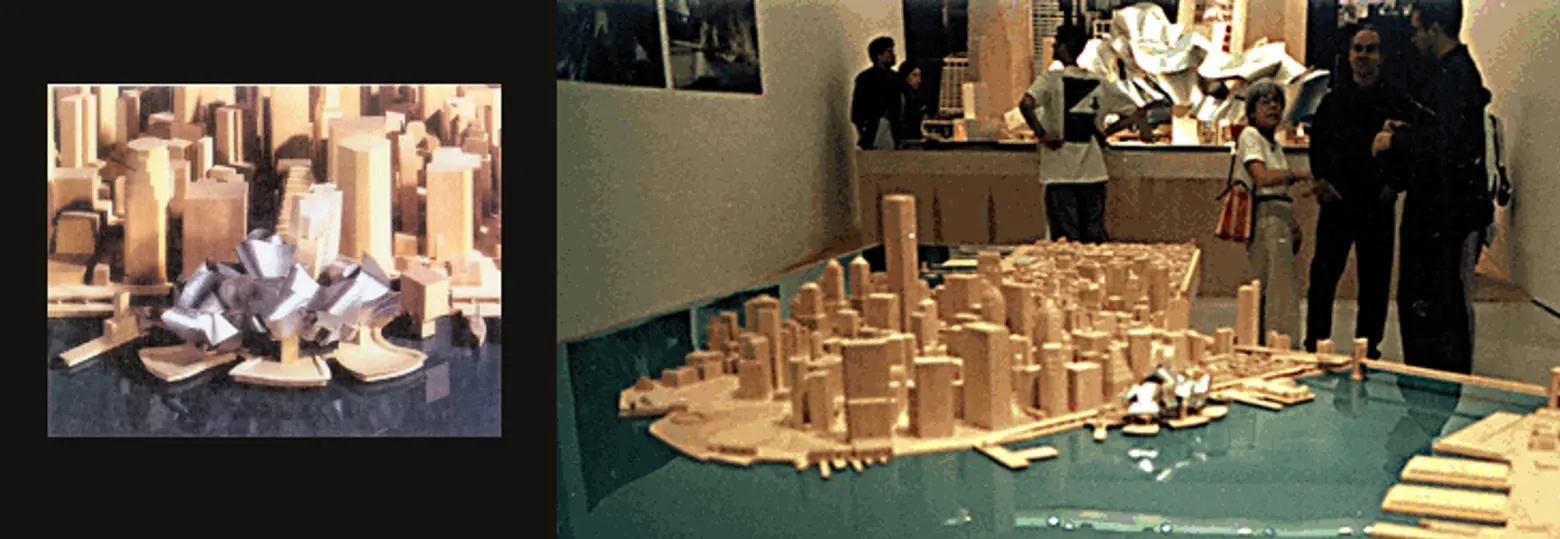 Carter B. Horsley for The City Review
Carter B. Horsley for The City Review
Why not ask Howard Hughes to abandon its current plan and do something really wonderful and revive the Guggenheim plan for Gehry’s gargantuan palace of titanium ribbons? The residential conversion of so many major office buildings is going, eventually, to create a need for new office buildings—and not much beats views of the Brooklyn Bridge and the new and not insignificant Brooklyn skyline. Gehry’s plan could be enlarged gracefully to accommodate both offices and condominiums and rebalance the famous Lower Manhattan skyline, and it makes a whole lot more sense than Hudson Yards, which is in distant and unattractive boondocks from the action in Midtown. Perhaps SHoP can turn the FDR Drive in Lower Manhattan south of the Brooklyn Bridge into a Low Line Elevated Park for a few hours each day just as the city prohibits cars on Central Park’s drive during long parts of the day.
The real long-time advantage of resurrecting Gehry’s fabulous Guggenheim project is that it will open up the future of the Lower East Side and brighten the prospects from Brooklyn. Not to mention that it would attract people from around the world, for it would be our “Bilbao,” our “Golden Gate,” our “Eiffel Tower.”
Close attention to Gehry’s Vuitton and Guggenheim East River schemes reveal that some tinkering with his swoops and swirls may be in order as both encircle towers that are not in keeping with the rest of the aesthetic. But these are minor adjustments and do not detract from the explosive dynamism of the designs, which are just plain exciting. Really exciting.
Get Insider Updates with Our Newsletter!
Leave a reply
Your email address will not be published.
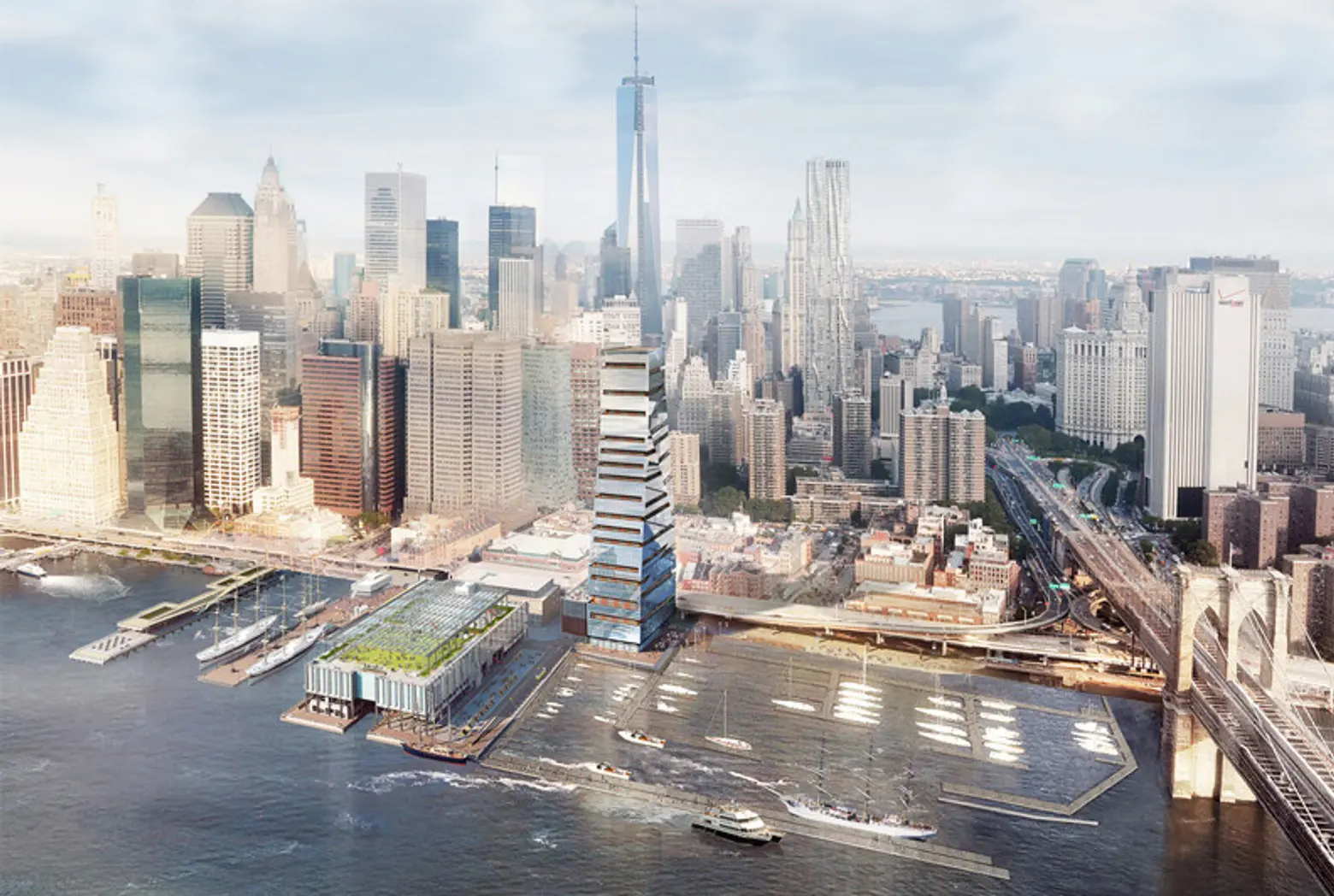
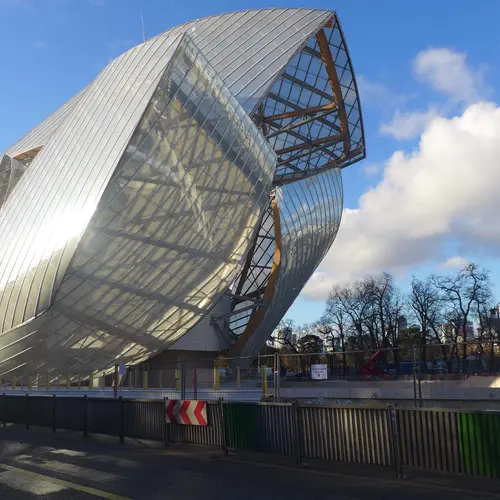
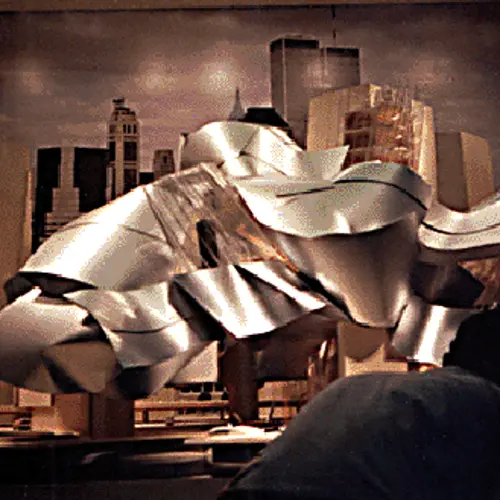
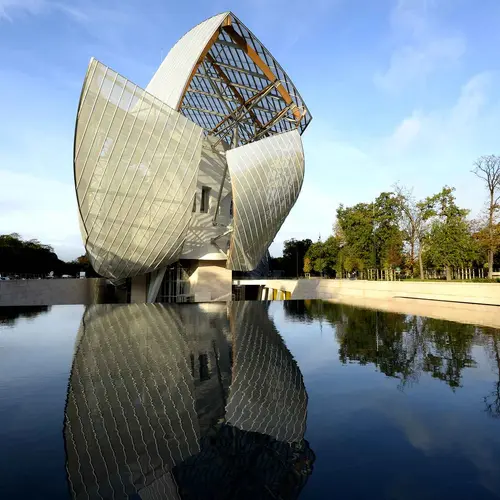
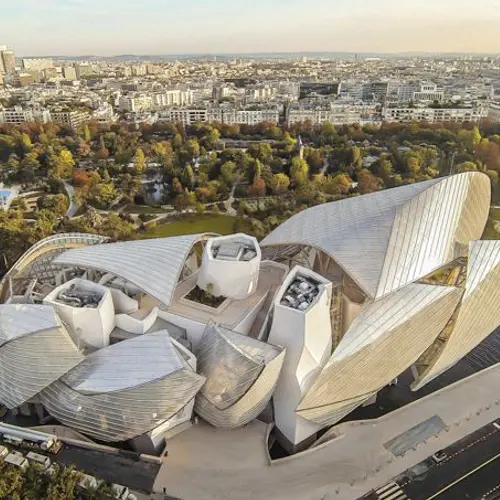
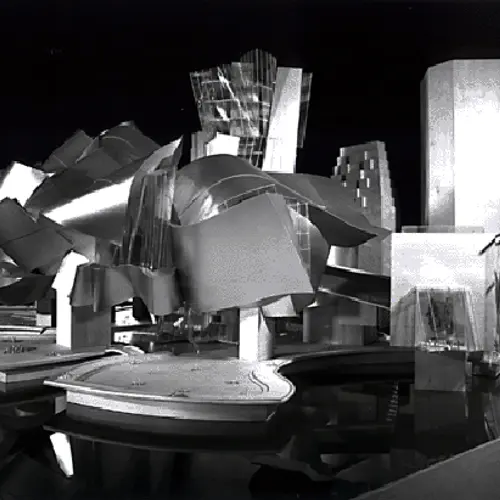
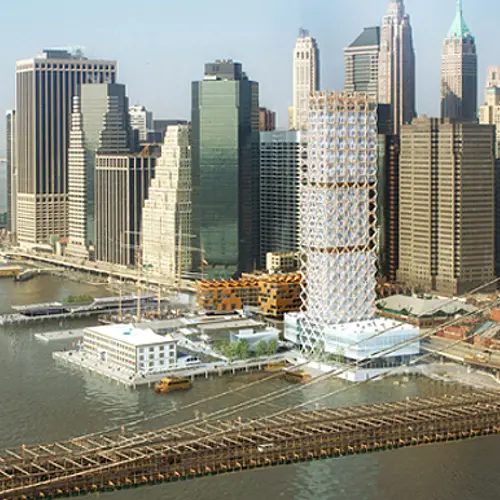
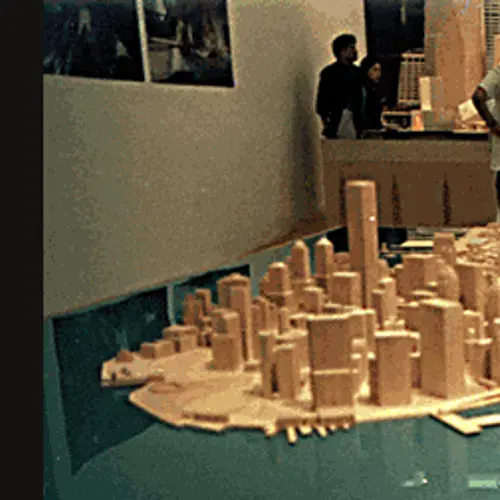
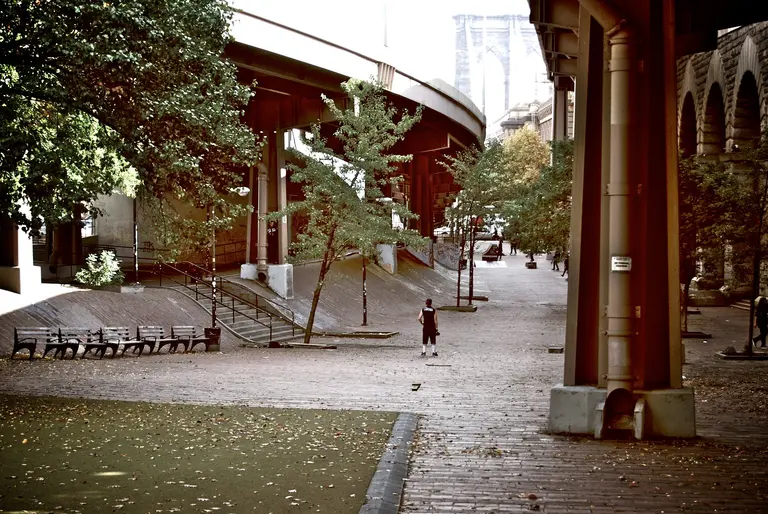

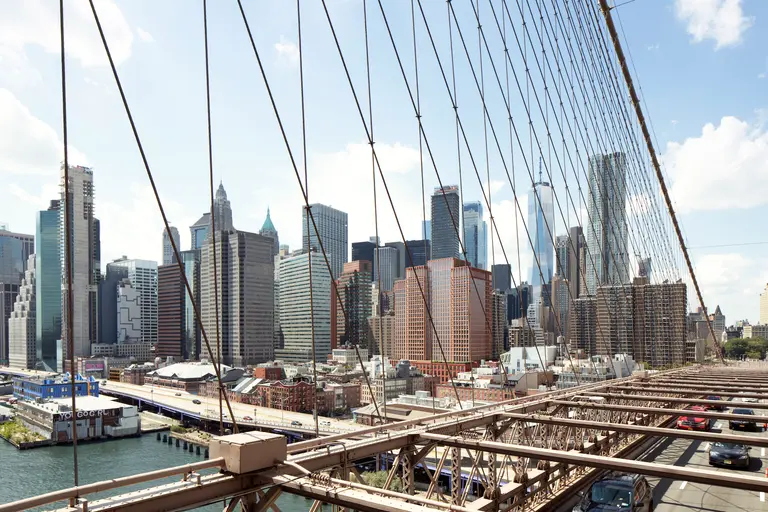
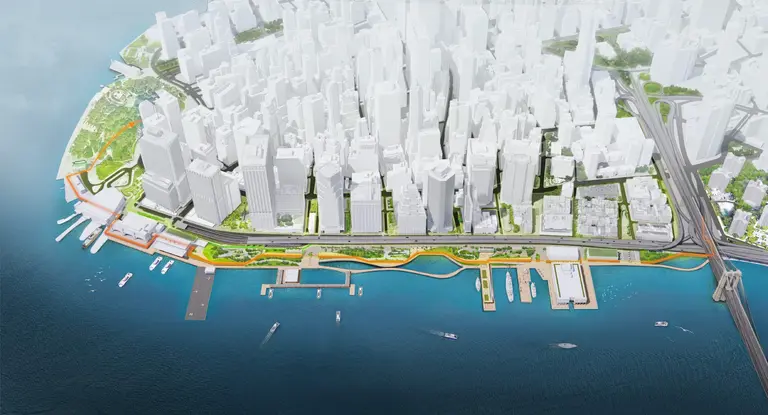
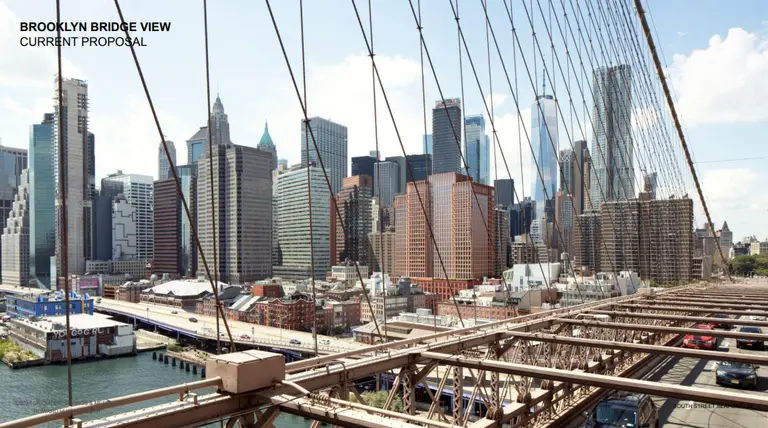
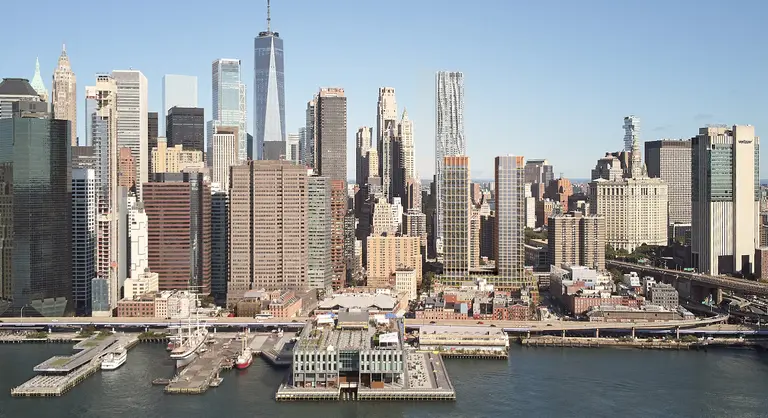





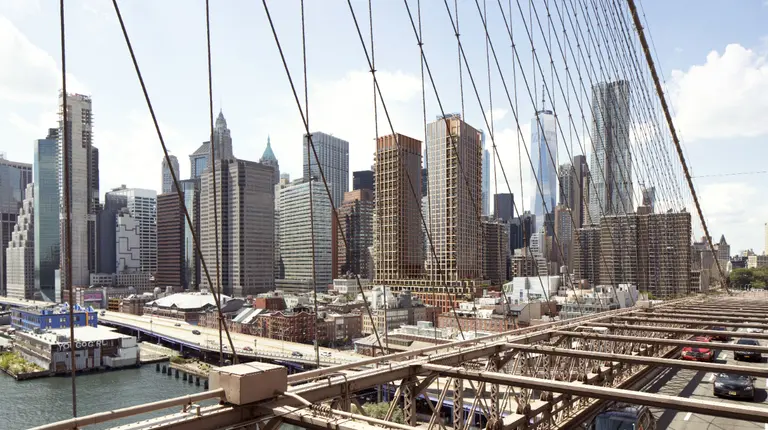
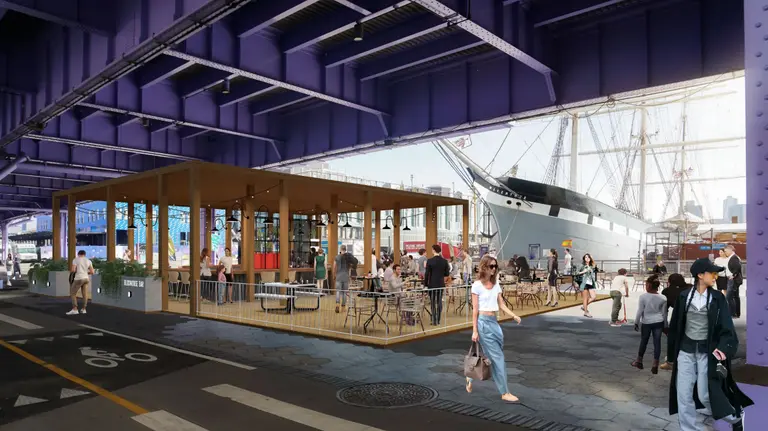
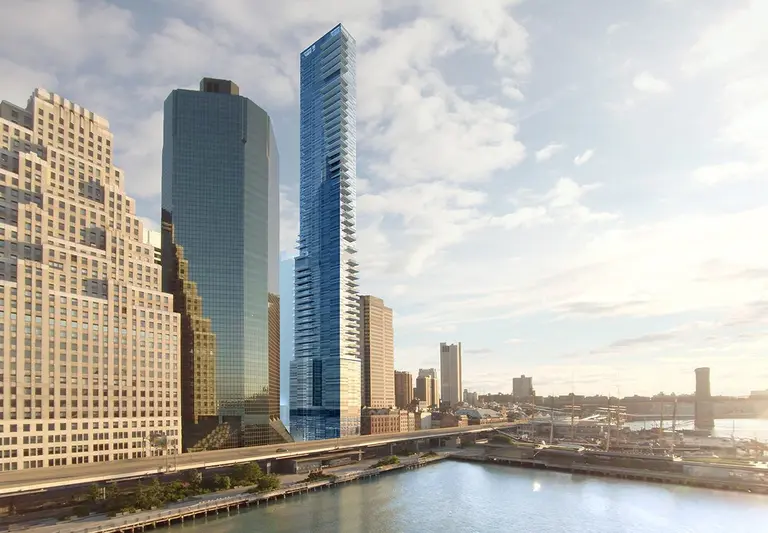
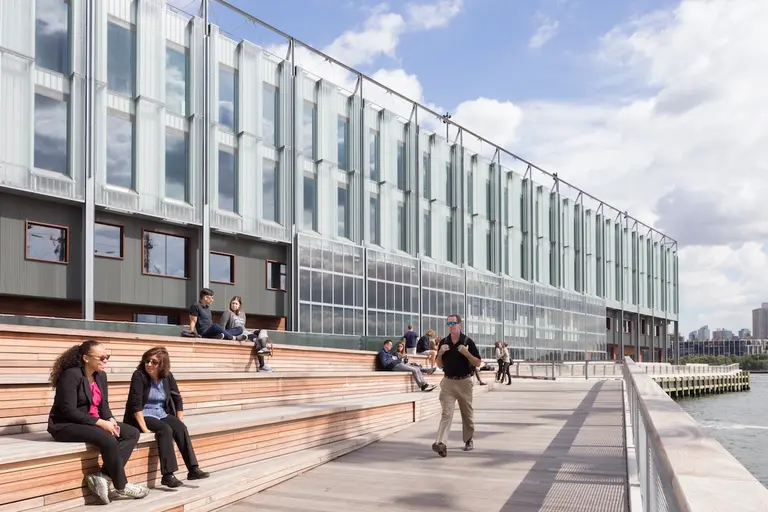
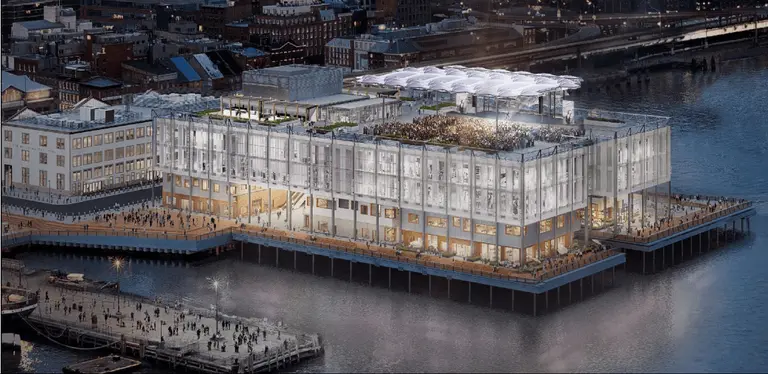
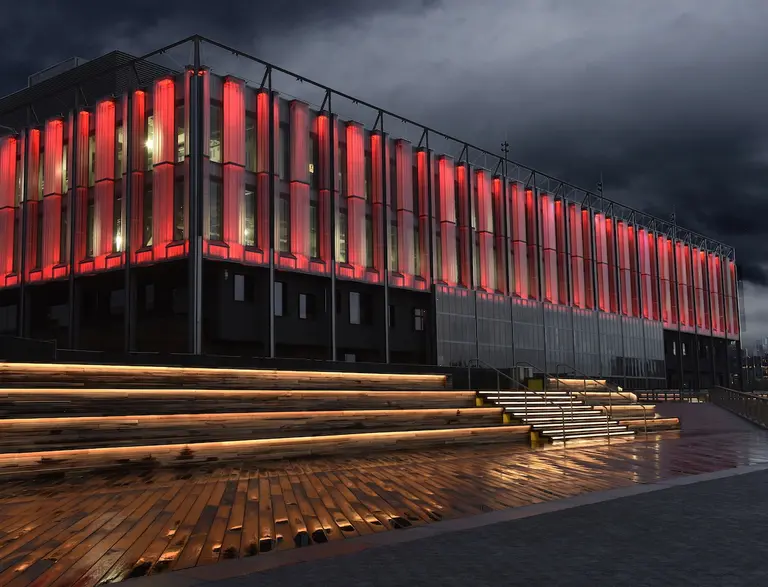











“Why not ask Howard Hughes to abandon its current plan and do something really wonderful and revive the Guggenheim plan for Gehry’s gargantuan palace of titanium ribbons?”
Because… they don’t develop museums and that they develop shopping centers instead? Using your skewed logic, why don’t you think outside your comfort zone and try to write intelligent and insightful articles on architecture and urbanism rather than this drivel?
How can any of us take Frank Gehry seriously anymore? He’s become a parody of himself, an architectural Tim Burton. The new seaport does have huge potential but if we allow him to inflict another one of his buildings on us it won’t be “our” anything.
+1. Gehry needs more restraint, not less. He has already vomited too many of his kitschy monstrosities onto New York’s defenseless streets. If he must be allowed to continue defiling landscapes with these pretentious piles of overpriced scrap metal, can’t he do so someplace where they would fit in better (Las Vegas, Disney World, etc.)?
As far fetched as this idea of allowing Gehry to take a stab at the future Seaport may be, it is certainly better than allowing Howard Hughes Corp to continue rampaging ahead unchecked. It’s scheme for the Seaport is exactly that; the ‘affordable housing’ and school options are meager givebacks to get what it really wants – that incredible location with that priceless view. And yet it is an absurd, feckless plan for Zone A of a FEMA flood zone. Time for New Yorkers to wake up to this before another Penn Station demolition takes place right under their noses…